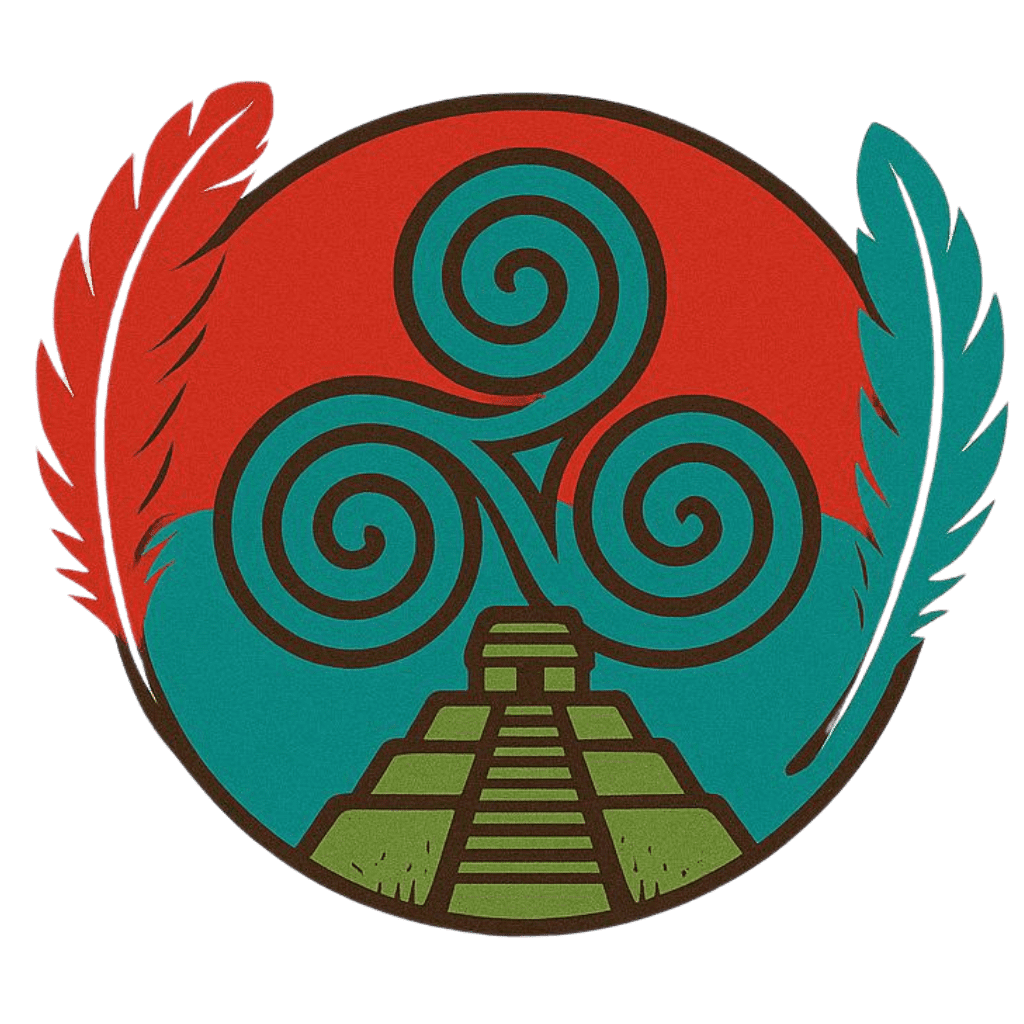The Flame Returns: Inka Roads, Indigenous Haiti, and the Unbroken Fire of Mu

“The mountains do not forget. The stones remember our footsteps.”
Across the Andes and the Caribbean, from the Qhapaq Ñan to Morne Rouge, our ancestors left more than stories. They left fire. Memory. Direction.
Before colonial maps, before borders, before the lie of erasure, the people of the sun traveled by stars and volcanoes. The Inka empire—Tawantinsuyu—was not a beginning but a resurgence. It stood on ancient roads carved by peoples who remembered the continent of Mu. These were mountain nations, solar priesthoods, dual-spirit shamans, and warrior builders whose sacred architecture aligned with constellations and the heartbeat of the land.
Among the Inka were the Qhariwarmi—dual-spirit priest-leaders, often male-bodied but embodying feminine and masculine energies in sacred balance. These individuals maintained shrines, conducted rituals, and mediated between Pachamama and Inti, earth and sun, past and future. Their role reflects a spiritual office not unlike the babaylan of the Philippines and the fa’afafine of Samoa—gender-diverse spiritual intermediaries.
The people now called Malagasy are often categorized as African by colonial record, yet genetic markers tell a deeper story. Mitochondrial haplogroups such as C, D, and B—also present among Indigenous peoples of the Andes and western Amazon—appear in Malagasy populations as well. These connections are not the product of colonial contact, but of precolonial movements that linked volcanic coasts, mountain priesthoods, and seafaring cultures long before empire redefined borders.
Even farther north, the ancient Jōmon of Japan—dark-skinned seafarers and earth-centered people—practiced tattooing, shellcraft, and fertility rites that mirror those of the Amazon, Andes, and Pacific islands. Their memory lives in mitochondrial haplogroups and spiritual symmetry. On Easter Island (Rapa Nui), the moai were not statues but ancestor-beacons, aligned to the stars. Their sacred platforms reflect the same stone knowledge seen at Tiwanaku and Cusco, reminding us that the people of the sun had always crossed oceans—not in conquest, but in ceremony. And in the heart of the Andes—between earth and sky—rose a name that would never die:

Mod ”modern Melanated inka man”

First ever painting of the indigenous in South America “los mulattos de Esmeraldas”

“Inka man Peru 1780s”
Túpac Amaru:
The last sovereign Inka ruler, Túpac Amaru I, was executed by the Spanish in 1572. But his legacy did not end there—it became seed. For two centuries, his name traveled underground—through rebel songs, secret rituals, and whispered prophecy. In 1780, his descendant, Túpac Amaru II (José Gabriel Condorcanqui), launched a great uprising in the Andes, invoking not Catholic saints, but the solar line of the Inka. His banner bore symbols of Tawantinsuyu, and his message called for the return of Indigenous law.
Though the Spanish tried to destroy him, his flame crossed the sea.
In Ayiti, the name Amaru—“serpent of light”—appeared again. Maroon leaders, some of whom had been trafficked from Peru, carried his legacy. General Gérin and others saw themselves as part of this same solar resistance. Some Haitian elders even remembered Inka banners appearing among early revolutionaries, and Dessalines’s own title—“Jefe de la casa de los Incas”—was no accident. It was resurrection.
The name Túpac Amaru later inspired freedom fighters across the world—from Peru to Jamaica, from Bolivia to Black America. Even in the 20th century, the name rose again in the voice of Tupac Amaru Shakur, whose mother named him after the Inka warrior to remind him of who he truly was: not a victim of slavery, but a descendant of kings, priests, and rebels.
Amaru means serpent. In the Andes, the serpent does not crawl—it climbs.
It is the guardian of the underworld, the river of memory.
It is the knowledge that slithers through time and bursts from the earth when the people are ready to rise again.






“Depictions of Túpac Amaru”
The Armée des Incas and the Indigène Rebirth
In 1802, Jean-Jacques Dessalines named his liberation force L’Armée des Incas—The Army of the Incas. His soldiers were not just “Africans”—they were descendants of Taíno, Natchez, Maya, Carib, Chichimeca, and Arawak maroons. Some traced their ancestry to the Andes, others to the Mississippi, all united in a war to reclaim sacred ground.
In 1803, the name evolved into L’Armée Indigène—a wider circle of memory that included all the original people of the continent. The revolution was not only anti-slavery. It was anti-colonial,
anti-erasure, and pro-Indigenous rebirth.

Their drums were not only African. Their conch shells were not foreign.
They were Taíno. They were Carib. They were Mu.
The Haitian generals remembered. Gérin envisioned a nation governed by caciquat, a council of sovereign Indigenous chiefs. In their ceremonies, they invoked the sun, the ancestors, and the serpent—Amaru, the memory of the Andes.
We Are the Embers of Mu
So when we walk the terraces of Machu Picchu, or trace the rebel trails of Ayiti, or chant the names of warriors who came before—we are not looking backward. We are fulfilling prophecy.
We are the children of the fire.
We are the descendents of Túpac Amaru.
We are the rebirth of L’Armée des Incas.
We are the ones who remember.
And the flame is returning.
